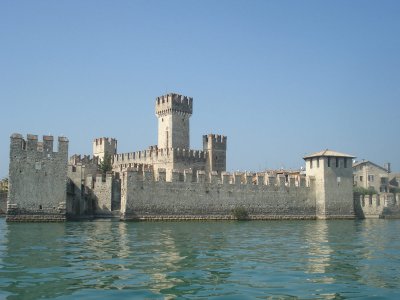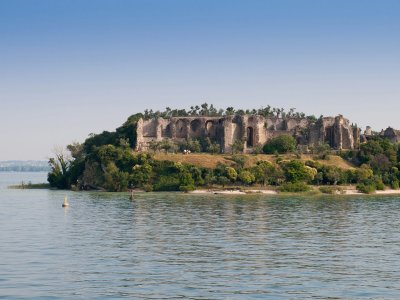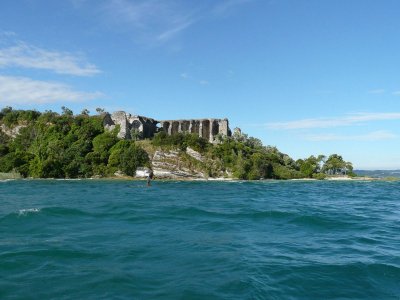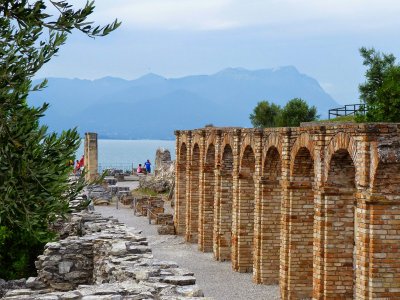Sirmione
Thanks to the poet Catullus, the town is well-known as "the pearl of every isles and peninsulas" and highly popular for the therapeutic proprieties of its thermal water. Located in the south area of the Lake Garda on a long and narrow peninsula between the gulfs of Desenzano and Peschiera, Sirmione is renowned thanks to those writers, like Catullus, Lawrence and Goethe, who celebrated the beauty of its landscape and its history.
Once called "Mansio", when the Western Roman Empire collapsed, Sirmione joined the Langobardic Empire and then Verona controlled the town during the XII century. In the XIII, Sirmione, under the Scaligeri Signoria, was encircled by impressive walls and the Castle was built. Then the Venice Signoria took the power in the XV century.
Sirmione is internationally renowned, not only for its Thermal Centre, but also for its artistic and historical heritage: the ancient Roman Villa, known ad the Grotto of Catullus, the Scaligeri Castle and the Church San Pietro in Mavinas.
San Pietro in Mavino Church
Consecrated to the Apostle Peter, the church is located in the highest part of the peninsula and its name probably comes from the Latin “ad summa vineas” meaning place with the wine yards up high.
The church San Pietro in Mavinas underwent restoration in 1320. The Roman bell tower was built in 1070. The frescos decorating the apses were painted in the XII century, while the frescos on the walls date back to the XVI century.
Civil Architecture
- The Maria Callas Hall, dating back to the XVII century and located in the central square "Giosuè Carducci". The building owns to the Municipality of Sirmione and it has been dedicated to the famous lyric star Maria Callas
- Villa Meneghini-Callas, once owned by the Giannantoni family, a reach family of the Lombard middle class. The businessman Meneghini bought it and lived there in the 50s together with his wife Maria Callas. Today the Villa is a private propriety.
The Scaliger Castle
The Scaliger Castle is a fortress overlooking the only entrance in the south side, at the beginning of the historic centre. The Scaliger noble family made the fortress to be built and gave it its name. The Castle was built between the XII and the XIV century.
The Castle is surrounded by the waters of the Lake Garda and three towers together with a keep tower were its defense. The eastern part of the castle hosts a fortified dock, to protect the fleet.
The Grottoes of Catullus
This roman "domus" was built between the end of the I century B.C and the I century A.D., on the tip of the Sirmione Peninsula. The first studies of the archeological site began at the beginning of the XIX century, when the building was brought to light in different phases. It is the more relevant evidence of the roman period in the territory and the best remain of a Roman Villa in the North of Italy.
Contrary to what the name grotto, meaning cave, would imply, the Grottoes of Catullus are not caves, even if, before the excavations began, the site appeared as a sum of caves. And though the Grottoes of Catullus are said to be the villa of the roman poet Gaio Valerio Catullus, there is no evidence that the building was actually the Latin Poets'. The site is stretched over a rectangular area of two hectares, with length of 167 m and a width of 105 meters. It also shows two short sides and in the middle an olive grove.


















